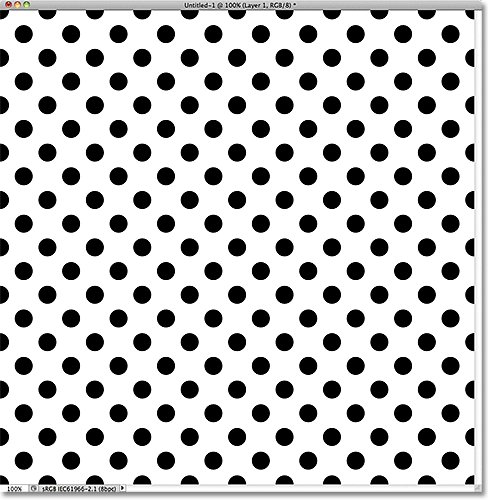Unveiling the Basics of Repeating Patterns in Photoshop: A Comprehensive Guide

In the realm of digital design, mastering the art of creating repeating patterns in Photoshop is a skill that empowers designers to breathe life into their creations, infusing them with rhythm, harmony, and visual appeal. From seamless backgrounds to captivating textile designs, the ability to craft repeating patterns opens up a world of creative possibilities. In this extensive guide, we embark on a journey through the fundamentals of repeating patterns in Photoshop, unraveling the techniques and principles that underpin this essential aspect of digital design.
I. Understanding Repeating Patterns:
A. Defining Repeating Patterns:
Repeating patterns, also known as seamless patterns, are visual motifs that seamlessly tile or repeat across a surface without visible seams or interruptions. They are characterized by their ability to create a continuous and harmonious visual flow, making them ideal for various design applications.
B. Importance of Repeating Patterns:
Repeating patterns serve as versatile design elements that can enhance the aesthetics and functionality of a wide range of projects. From web backgrounds and print materials to textile designs and digital art, repeating patterns add visual interest, texture, and cohesion to design compositions.
II. Essential Tools and Techniques:
A. Pattern Creation Tools:
- Custom Shape Tool: Allows users to create basic shapes that can be duplicated and arranged to form repeating patterns.
- Pen Tool: Enables precise drawing of custom shapes and paths, offering greater flexibility in pattern creation.
- Brush Tool: Useful for creating organic and free-form patterns, particularly when working with textured brushes.
B. Pattern Creation Techniques:
- Tiling and Repetition: The process of duplicating and aligning elements to create a seamless pattern.
- Layer Masks: Utilized to hide or reveal portions of a layer, allowing for intricate pattern designs.
- Offset Filter: A tool used to seamlessly blend the edges of a pattern for a seamless repeat.
III. Setting Up the Canvas:
A. Canvas Size and Resolution:
- Choosing the Right Dimensions: Considerations for the intended use and size of the pattern.
- Resolution Considerations: Balancing file size with image quality for optimal performance.
B. Creating a Grid:
- Grid Settings: Configuring grid spacing and color for easy alignment of pattern elements.
- Snap to Grid: Enabling the snap-to-grid feature for precise positioning of shapes and elements.
IV. Designing a Basic Repeating Pattern:
A. Selecting Base Shapes:
- Simple Geometric Shapes: Ideal for creating minimalist and modern patterns.
- Complex Shapes: Adding intricacy and detail to patterns for a more dynamic visual impact.
B. Arranging and Duplicating Elements:
- Duplicating Layers: Using copy and paste commands to duplicate pattern elements.
- Arranging Layers: Organizing layers to ensure proper alignment and composition.
V. Seamless Tiling Techniques:
A. Aligning Elements:
- Snap Alignment: Using Photoshop’s snapping feature to align elements precisely.
- Manual Adjustment: Fine-tuning element placement to eliminate visible seams and gaps.
B. Testing and Refining:
- Zooming In: Inspecting the pattern at a close magnification to identify imperfections.
- Iterative Refinement: Making adjustments to achieve a seamless and visually pleasing result.
VI. Saving and Exporting Patterns:
A. Defining the Pattern:
- Define Pattern Command: Converting the pattern into a usable Photoshop pattern.
- Naming Conventions: Using descriptive names to facilitate easy identification of patterns.
B. Exporting Patterns:
- Saving Pattern Files: Exporting patterns as image files for use in various design applications.
- File Formats: Considering the appropriate file format based on the intended use of the pattern.
VII. Applying Repeating Patterns:
A. Web Design:
- Backgrounds and Textures: Incorporating repeating patterns into website backgrounds and textures.
- User Interface Elements: Enhancing user interface elements with subtle pattern designs.
B. Print Design:
- Textile Design: Creating seamless patterns for fabric prints, wallpapers, and textiles.
- Packaging Design: Adding visual interest to packaging designs with custom repeating patterns.
VIII. Troubleshooting and Optimization:
A. Addressing Common Issues:
- Seam Artifacts: Techniques for minimizing or eliminating visible seams in repeating patterns.
- Color Banding: Strategies for reducing color banding and ensuring smooth transitions.
- File Size Optimization: Tips for optimizing pattern files for web and print applications.
B. Pattern Accessibility:
- Readability and Scale: Ensuring patterns are legible and visually appealing at different scales.
- Color Contrast: Balancing color contrast to maintain visibility and accessibility.
Conclusion:
Mastering the basics of creating repeating patterns in Photoshop is the first step towards unlocking a world of creative possibilities. By understanding the principles and techniques outlined in this guide, designers can elevate their designs with seamless and captivating patterns that enhance visual appeal and storytelling. Whether used in web design, print materials, or digital art, repeating patterns serve as powerful tools for expressing creativity and engaging audiences. As designers continue to explore and experiment with pattern creation, they embark on a journey of discovery and innovation within the dynamic landscape of digital design.







